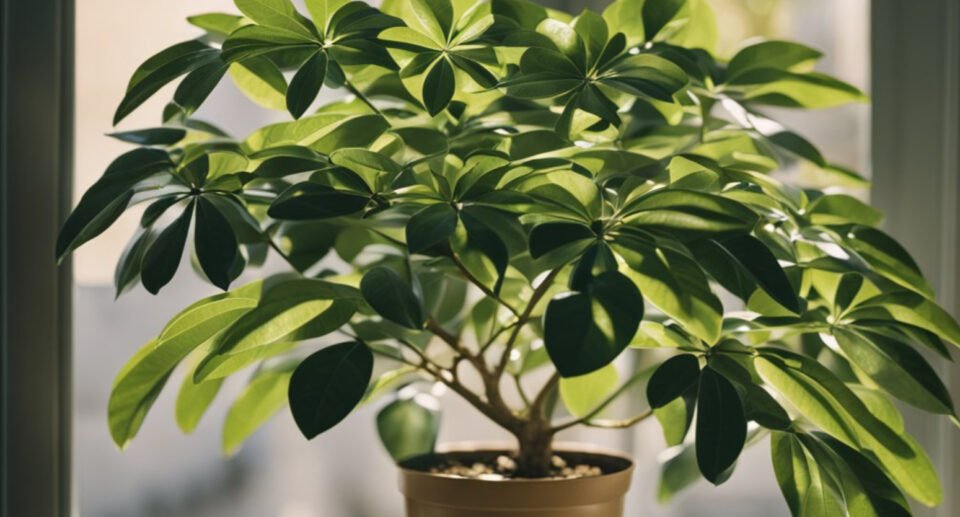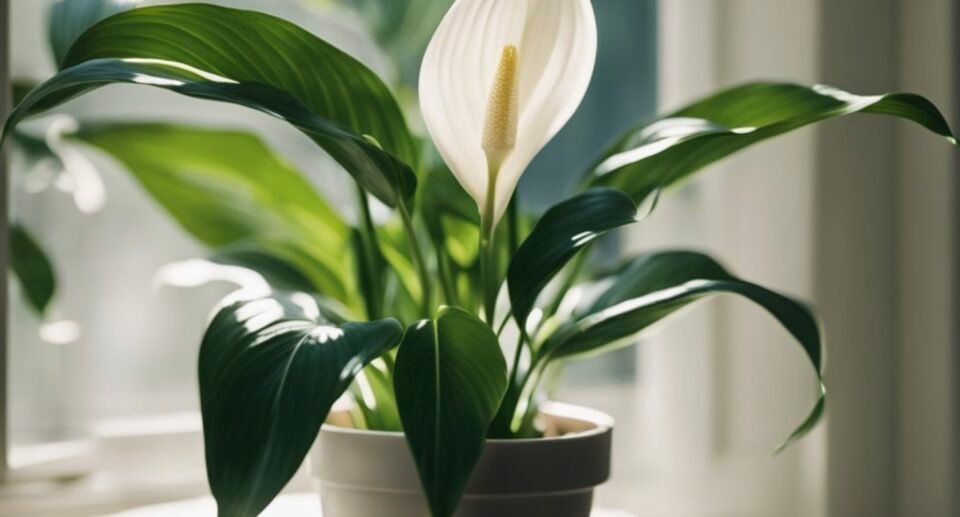Best West Facing Window Plants: Secrets Revealed!

West-facing windows can be a challenge for plant lovers. These windows receive direct sunlight during the hottest part of the day, which can be too intense for some plants. However, with the right selection, west-facing windows can be a great place to grow a variety of plants.
When choosing plants for a west-facing window, it’s important to consider the amount of light and heat they will receive. Plants that are adapted to bright, direct light will do well in this location.
Some examples of plants that thrive in west-facing include Ti plants, Schefflera, and Yucca.
Understanding Light and Plant Health
Plants need light to survive, and the right amount of light is essential for their growth and health. Light is necessary for photosynthesis, the process by which plants convert light energy into chemical energy, which they use to grow and produce food.
The Science of Sunlight and Photosynthesis
Photosynthesis occurs in the chloroplasts of plant cells, and it requires three things: light, water, and carbon dioxide. During photosynthesis, light energy is absorbed by chlorophyll, which is a pigment found in plant cells.
This energy is then used to split water molecules into oxygen and hydrogen, and to convert carbon dioxide into glucose, which is a type of sugar that plants use for energy.
The amount and intensity of light that plants receive affects the rate of photosynthesis and their overall growth. Too little light can cause plants to become weak and spindly, while too much light can cause them to become scorched or wilted.
West-Facing Windows: Advantages and Considerations
West-facing windows provide bright, indirect light in the morning hours and bright, direct light in the afternoon, which is ideal for many plants. However, the intensity of the afternoon sun can be too harsh for some plants, and they may need to be protected from it.
When selecting plants for west-facing windows, it’s important to consider their light requirements and to choose plants that can tolerate the light intensity.
Some plants, such as the Ti Plant, Schefflera, and Yucca, do well in bright, direct light, while others, such as the English Ivy and Fiddle Leaf Fig, prefer low to medium indirect light.
Selecting the Right Plants for West-Facing Windows
When selecting plants for a west-facing window, you need to choose species that can handle the intense light and heat that comes with afternoon sun exposure. Here are some options for plants that can thrive in these conditions.
Succulents and Cacti: Ideal Choices for Intense Light
Succulents and cacti are great choices for west-facing windows because they are adapted to thrive in hot, dry environments. These plants can handle intense sunlight and heat, making them perfect for a window that gets direct afternoon sun.
Some popular options include aloe, jade plant, and snake plant. These plants require minimal watering and care, making them a low-maintenance option for those with busy schedules.
Leafy Houseplants That Thrive in Afternoon Light
For those who prefer leafy houseplants, there are several options that can handle the intense light of a west-facing window. The Monstera and Fiddle Leaf Fig are two popular choices that can thrive in these conditions.
These plants prefer bright, indirect light, which makes them a great option for a window that gets direct afternoon sun. Other leafy plants that can thrive in west-facing windows include English Ivy and Coleus.
Flowering Plants for Dynamic West-Facing Views
For those who want to add some color to their west-facing window, there are several flowering plants that can handle the intense light and heat.
Some popular options include Kalanchoe, Croton, and Ti plant. These plants can add a pop of color to your window while also thriving in the intense afternoon sun.
Plant Care and Maintenance
Watering Routines for Sun-Loving Plants
Watering routines are an essential aspect of plant care, especially for sun-loving plants. West-facing window plants need to be watered more frequently than other plants due to the amount of sunlight they receive.
It is important to keep the soil moist but not waterlogged. Overwatering can lead to root rot and other fungal diseases. Underwatering can cause the leaves to wilt and turn brown.
To prevent overwatering, it is recommended to use well-drained soil. The soil should be moist but not waterlogged.
A good rule of thumb is to water the plant when the top inch of soil feels dry to the touch. It is also essential to water the plant thoroughly, ensuring that the water reaches the roots.
Soil and Fertilization: Foundations of Plant Health
Soil and fertilization are the foundations of plant health. West-facing window plants need well-drained soil that is rich in nutrients.
The soil should be slightly acidic with a pH range of 6.0 to 6.5. It is recommended to use a high-quality potting mix that is specifically designed for indoor plants.
Fertilization is also essential for the growth and health of west-facing window plants.
It is recommended to fertilize the plants every two weeks during the growing season with a balanced fertilizer. Overfertilization can lead to salt buildup in the soil, which can harm the plant.
It is important to follow the manufacturer’s instructions when fertilizing the plant.
Temperature and Humidity: Creating an Ideal Environment
Temperature and humidity are crucial factors in creating an ideal environment for west-facing window plants.
These plants prefer warm temperatures between 65 and 75 degrees Fahrenheit. It is also essential to maintain a consistent temperature and avoid sudden temperature changes.
Humidity is also important for the growth and health of these plants.
They prefer a humid environment with a humidity level between 40 and 60 percent.
To increase humidity, it is recommended to use a humidifier or place a tray of water near the plant.
It is also important to avoid placing the plant near a drafty window or air conditioning unit, which can cause fluctuations in temperature and humidity.
Troubleshooting Common Issues
Preventing and Treating Sunburn in Plants
One of the most common issues with west-facing window plants is sunburn. Sunburn occurs when the plant is exposed to too much direct sunlight, causing the leaves to turn yellow or brown and eventually die.
To prevent sunburn, it is important to provide the plant with filtered light or partial sun. This can be achieved by using curtains or shades to block out direct sunlight during the hottest parts of the day or by moving the plant to a location where it will receive less direct sunlight.
If sunburn does occur, it is important to remove the damaged leaves and move the plant to a location with less direct sunlight.
Applying aloe vera gel or a commercial plant sunburn treatment can also help to soothe the damaged leaves and promote healing.
Managing Light Exposure with Curtains and Shades
Curtains and shades can be an effective way to manage the amount of light that west-facing window plants receive.
By closing the curtains or shades during the hottest parts of the day, you can help to filter out direct sunlight and prevent sunburn.
It is also important to consider the type of curtains or shades that you use.
Light-colored curtains or shades will reflect more light and provide a cooler environment for the plant, while dark-colored curtains or shades will absorb more light and create a warmer environment.
Adapting to Seasonal Changes in Light Conditions
The amount of light that west-facing window plants receive can vary depending on the season.
During the summer months, the sun is higher in the sky and the plant may receive more direct sunlight, while during the winter months, the sun is lower in the sky and the plant may receive less direct sunlight.
To adapt to these seasonal changes, it is important to monitor the amount of light that the plant receives and adjust the curtains or shades accordingly.
It may also be necessary to move the plant to a different location during different times of the year to ensure that it receives the appropriate amount of light.
Conclusion
In conclusion, choosing the right plants for a west-facing window can be a challenge, but it is not impossible. It is important to consider the light intensity, temperature, and humidity of the room before selecting a plant.
Some of the best plants for a west-facing window include the Schefflera, Ti Plant, Coleus, Aloe Vera, and Yucca. These plants thrive in bright, indirect light and can add a touch of greenery and life to any room.
It is important to note that while these plants are well-suited for west-facing windows, they still require care and attention. Regular watering, fertilizing, and pruning are essential to keep them healthy and thriving.
In addition, it is always a good idea to research the specific needs of each plant before purchasing them. This can help ensure that they are the right fit for your home and lifestyle.
With a little bit of research and care, anyone can successfully cultivate a beautiful and thriving garden in their west-facing window.

Hello, I’m Keith Jones. I’m the author and head of content here of door and window guide. I’ve been in the window and door industry for over 10 years in the UK and North America. I’ve had quite a few roles during my career mainly in Worldwide sales. I’m now semi retired so I thought I’d put my knowledge to good use educating people about all they might need to know about door and window related topics.






